Common Woods - Amersfoort
Deeply rooted in the historic Nimmerdor Forest in Amersfoort, Common Woods is redefining what it means to live well. Where there once was a riding school—with many horses, significant nitrogen emissions, and little nature—there is now a nature-inclusive neighborhood that absorbs more nitrogen than it emits. A vibrant community where nature is not only respected but is an essential part of daily life.
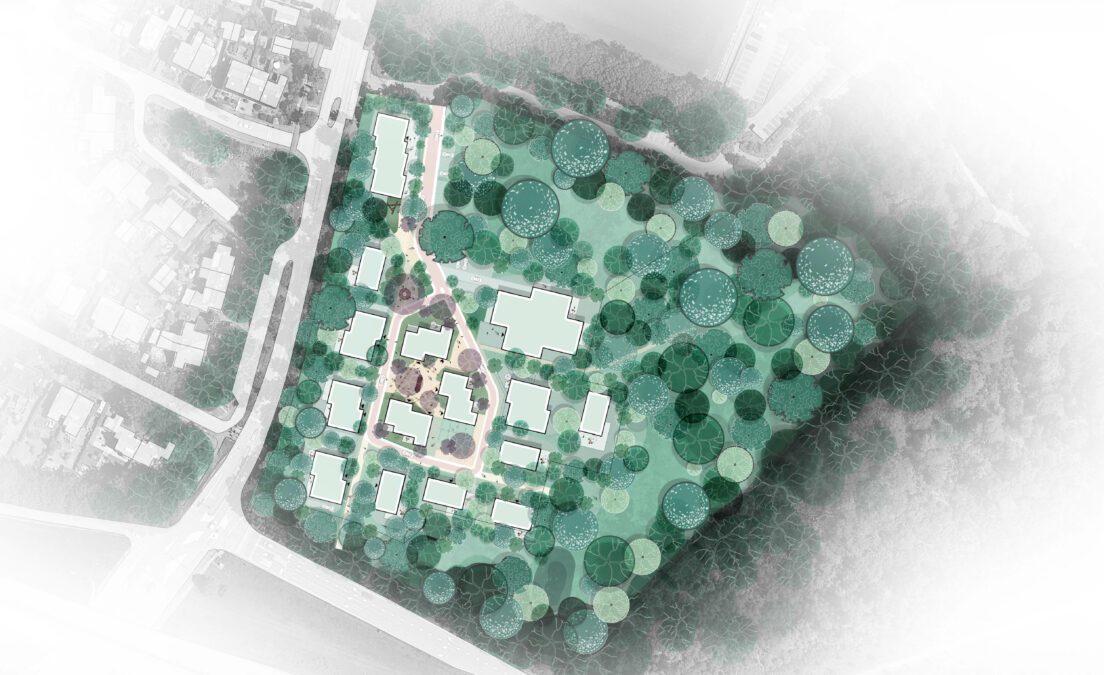
“Common Woods: where architecture, community and nature go hand in hand toward the most sustainable future.”
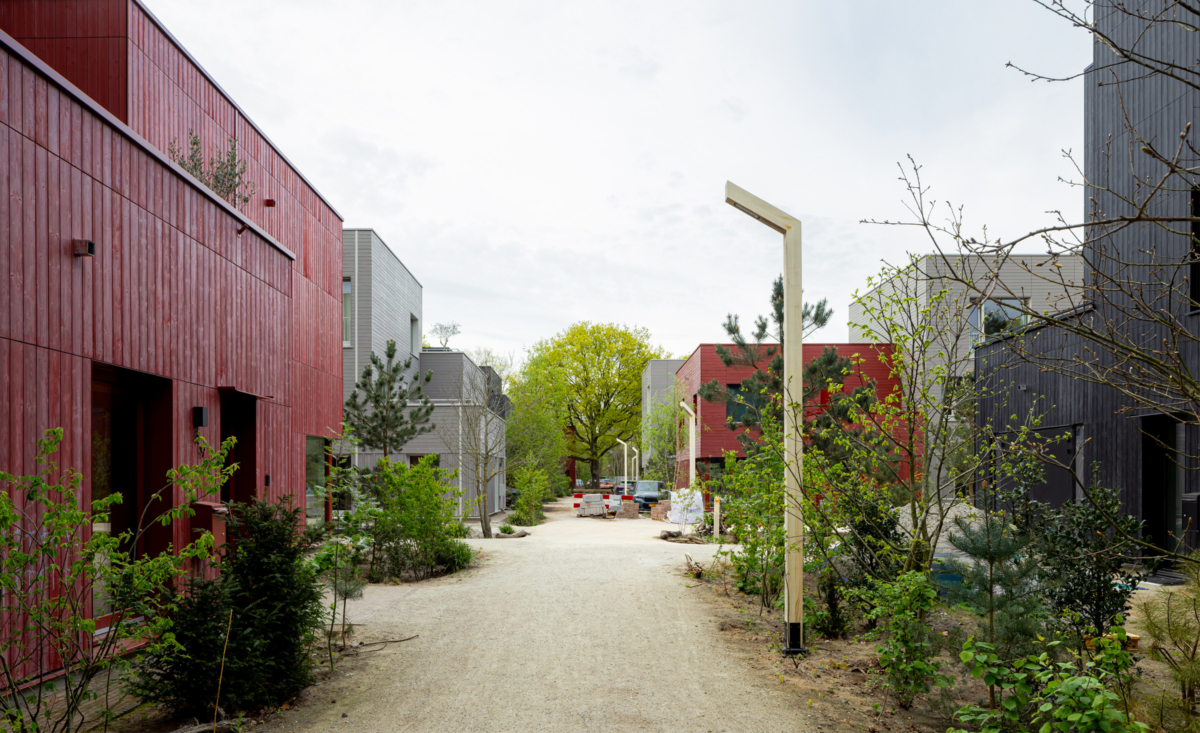
Sustainable and future-proof
Common Woods is built with a strong focus on both ecology and quality of life. The ambition: to become the most sustainable residential neighborhood in Europe. Each home is surrounded by a natural reserve where biodiversity thrives. The ground-level houses are nearly energy-neutral, with low energy consumption. Heat is stored in the summer and used in the winter—without a gas connection, yet with full comfort. Through the use of helophyte filters and rainwater tanks, up to 40% of drinking water is saved. Vegetable and fruit waste goes into a composting machine and returns within two weeks as nutrient-rich compost. Pruned branches and other green waste are collected in specially designated areas, where they serve as shelter for small animals.
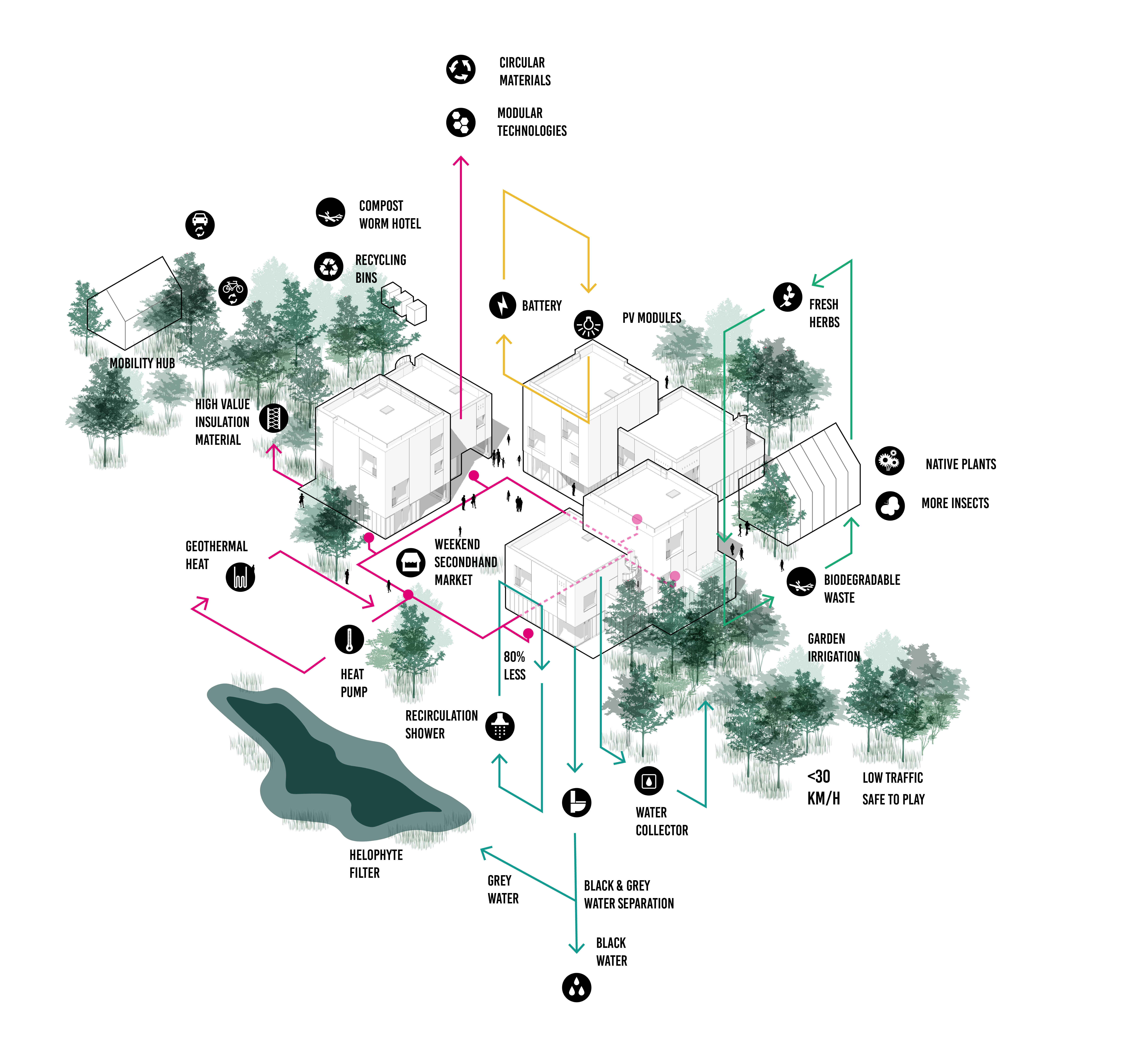
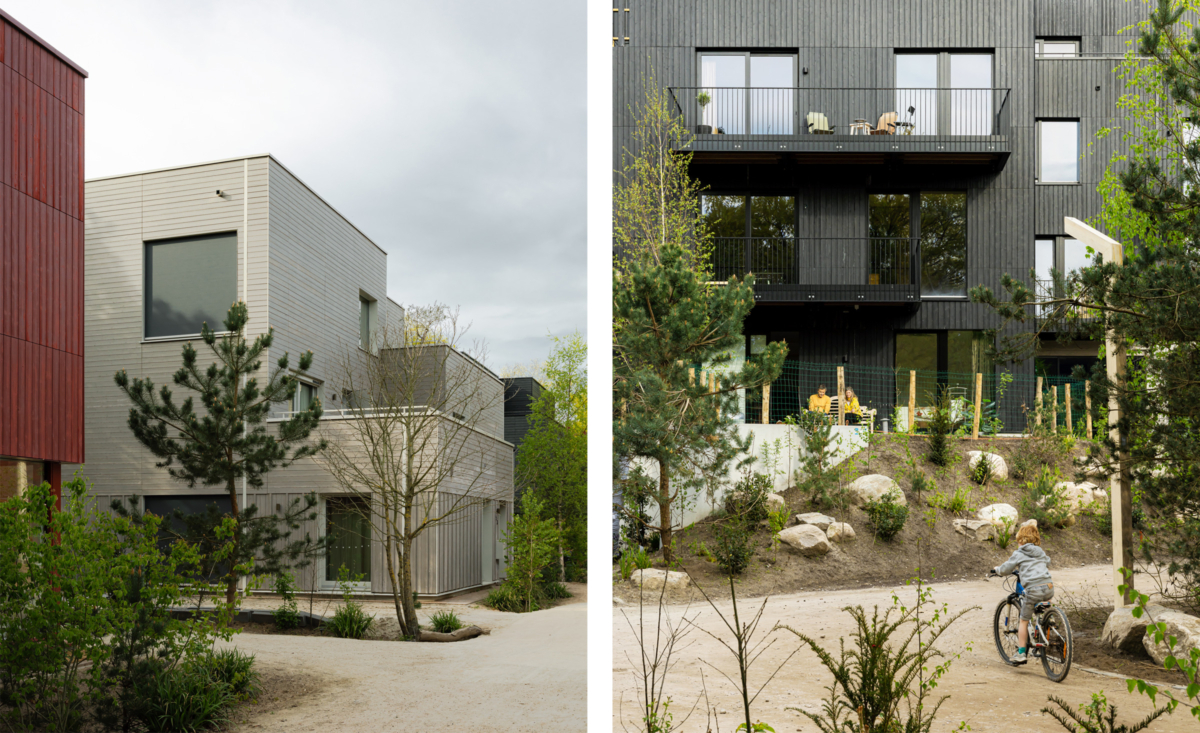
A close-knit community
Connection is at the heart of Common Woods. The neighborhood is designed to encourage interaction and collaboration. In the shared common space, neighbors gather for a cup of coffee, while the communal greenhouse offers a place to grow food together. Children help design their own play areas, and sports and play facilities bring all generations into motion. Beneath the large oak tree stands a long community table for shared dinners. Neighborhood management is a collective effort, with all residents working together in an association focused on both maintenance and stewardship.
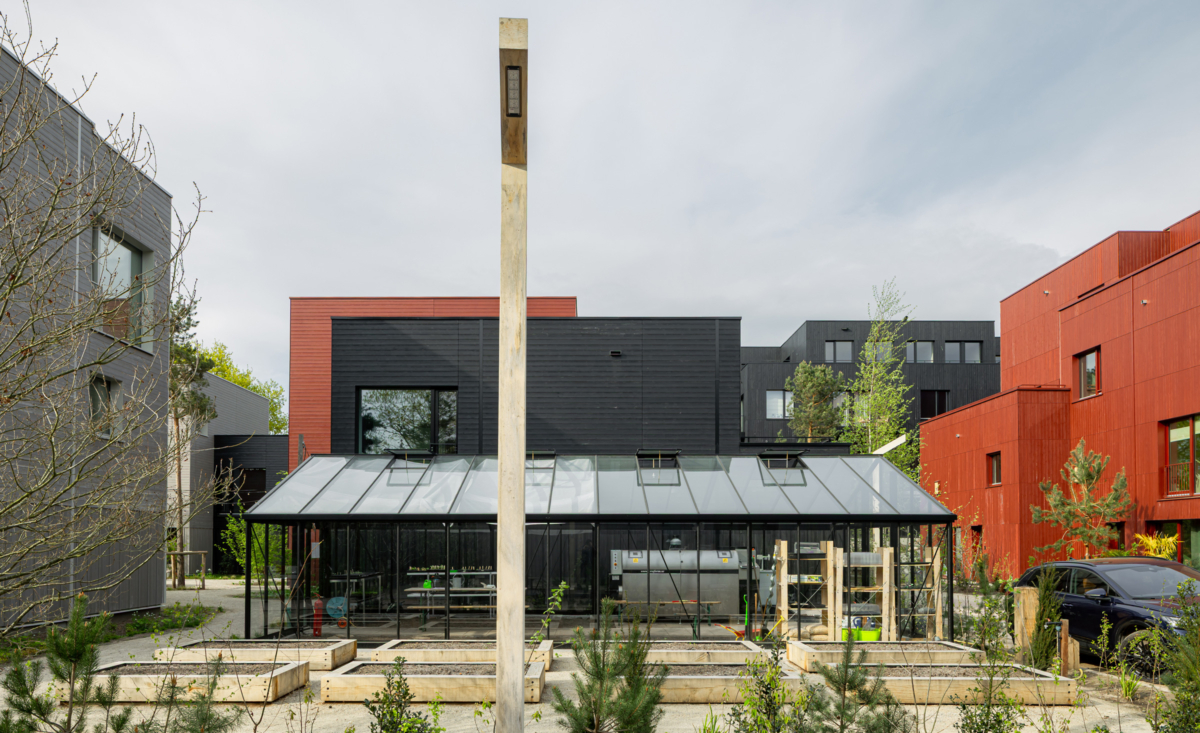
An immersive forest experience
Common Woods is located on the edge of the Nimmerdor area. With natural materials and a design that prioritizes animal welfare, the neighborhood blends into its green surroundings. Existing trees form the foundation of the landscaping plan, with homes nestled among “forest rooms” — natural spaces framed by woodland edges and native planting. This creates a tangible sense of the forest, both inside the homes and throughout the public areas. Nesting boxes and shelters for birds, bats and butterflies are integrated into the facades. The woodland edge around the neighborhood has been reinforced with native species—benefiting both biodiversity and residents’ privacy. Cars are kept out of sight thanks to green parking spaces and narrow lanes with walking paths that connect the neighborhood to squares and trails.
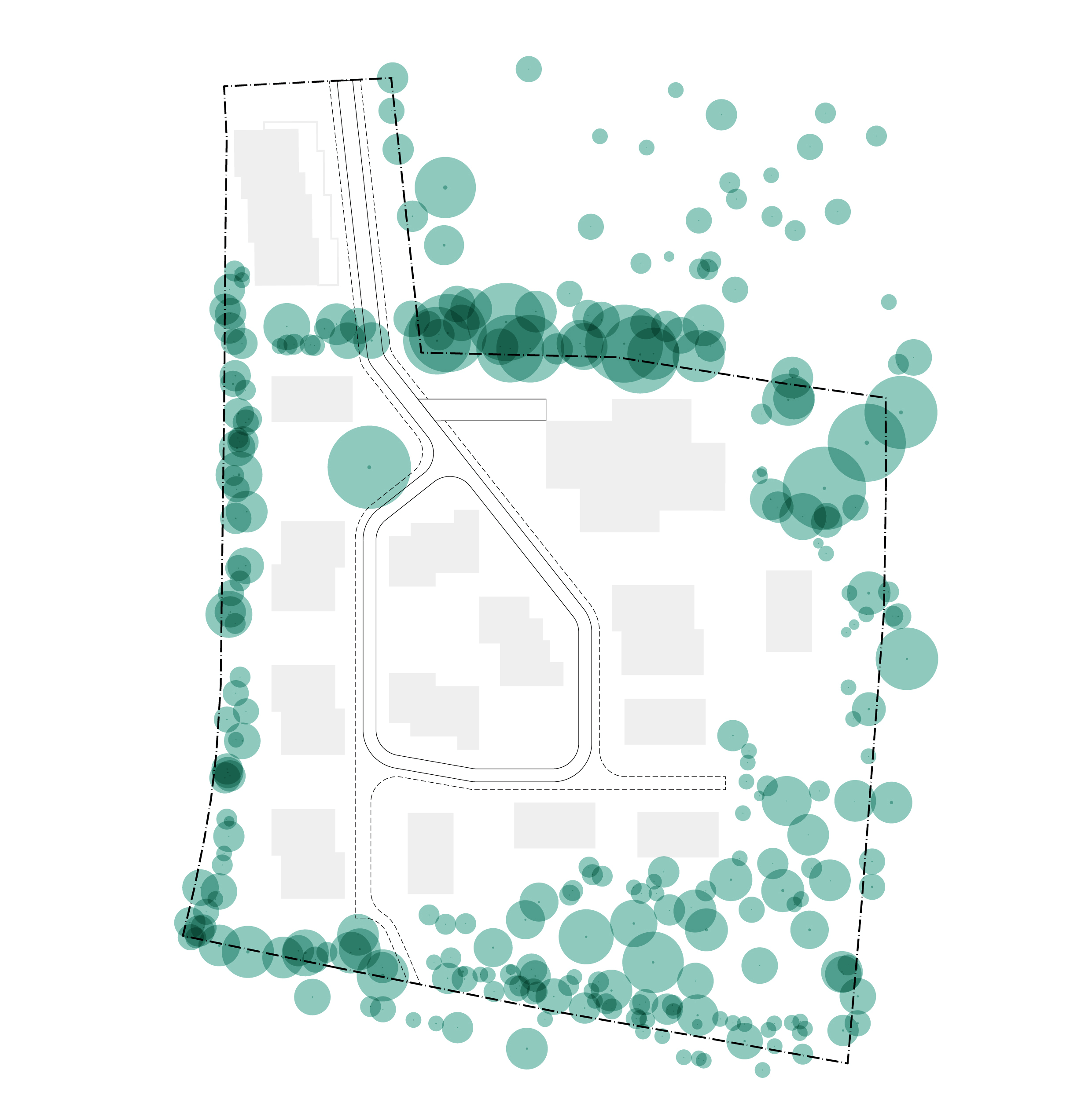
“A new living environment for people and wildlife that extends the adjacent nature reserve.”
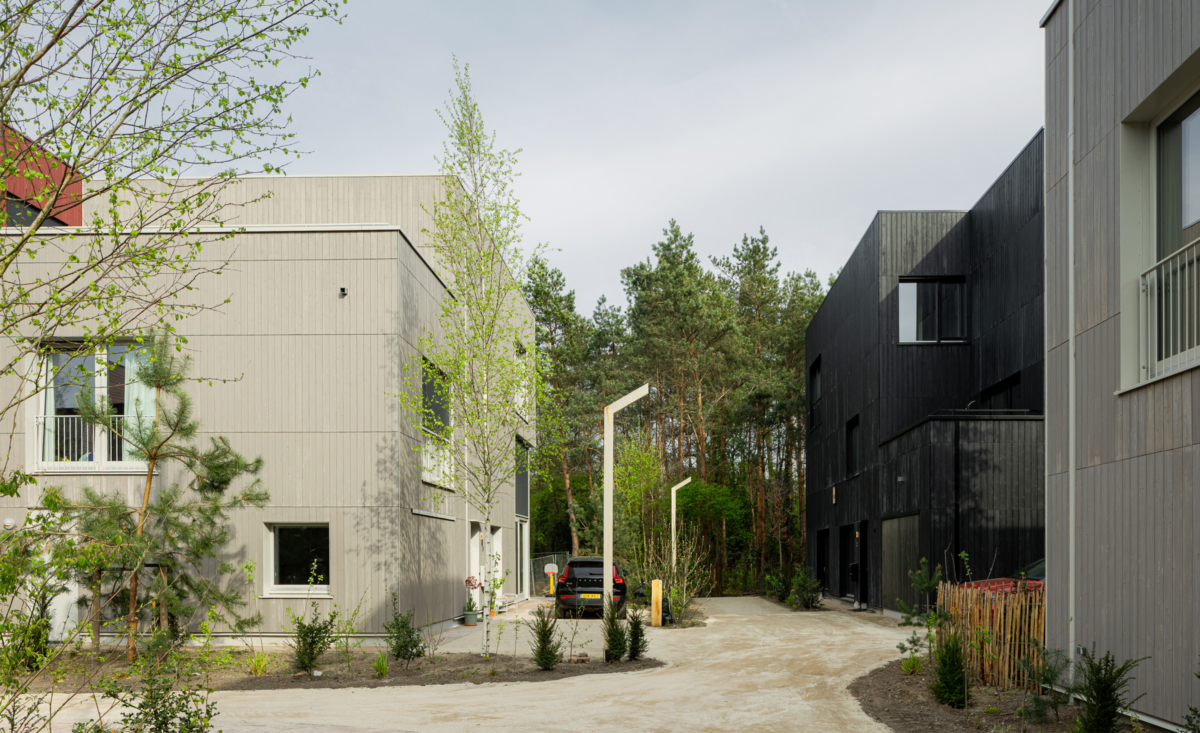
- Location
- Amersfoort
- Status
- Completed
- Client
- Holistic Development
- Together with
- Space&Matter, Karbouw, SmitsRinsma, Building the New, VIC Landscapes
- Photography
- Sebastian van Damme, Marlies Doesburg